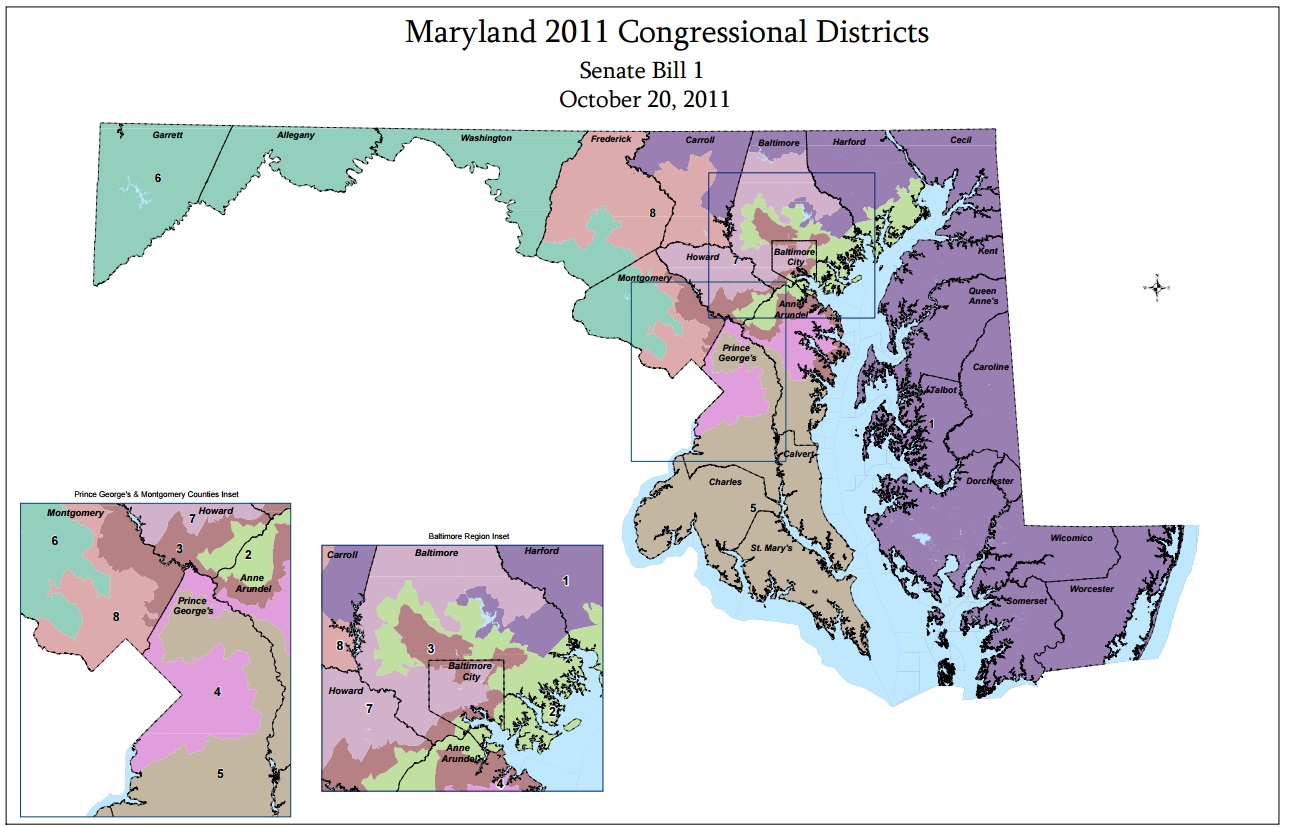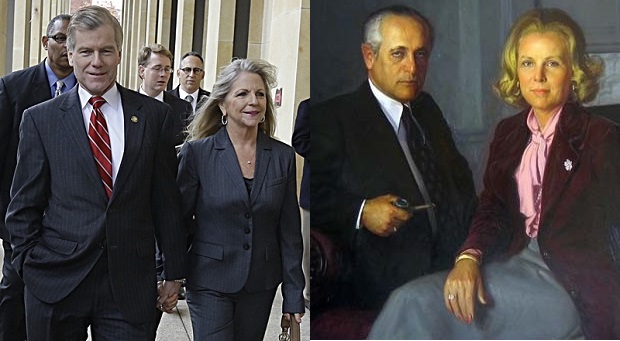By Barry Rascovar
For MarylandReporter.com
Holy mackerel! Can you believe this? Former Gov. Martin O’Malley has admitted politics played a big role in re-drawing Maryland’s congressional districts after the 2010 Census.
The state’s major newspapers and good-government groups went bananas. Editorial writers had a field day denouncing O’Malley and other Democratic leaders for this dastardly admission.
Politics determining the shape of new congressional districts?
What is this state coming to? Why it’s almost un-American!
Exactly which alternative universe are these people living in?
Politics and re-districting have been wrapped tightly together since the nation’s formative years.
Changing legislative boundaries
Remember Massachusetts Gov. Elbridge Gerry? (He pronounced his last name with a hard “G” but today everyone makes it sound like a “J.”)
In 1812, Gerry so badly contorted state Senate districts in the Boston area to benefit his Jeffersonian Republican-Democratic Party that the map resembled a mythological salamander. Thus, Gerry’s salamander-looking re-districting map, and today’s distorted district lines, became known as “gerrymanders.”
Political manipulation of legislative boundaries has been embedded in our history ever since – and for good reason. Once a political party seizes control, it wants to retain or enlarge that control through any legitimate means.
As New York Sen. William Marcy explained after Andrew Jackson’s 1828 victory led to massive patronage appointments by the new Democratic president, “To the victor belong the spoils” – including the ability to engage in partisan re-districting every 10 years.
Both major political parties do it.
In Maryland with its lopsided Democratic dominance that means Democratic gerrymandering.
Doing in Bartlett
Thus, Republican Congressman Roscoe Bartlett of Western Maryland found himself unable to win re-election after Democrats re-drew his rural, heavily Republican district following the 2010 Census, adding a vast swath of populous – and Democratic – Montgomery County.
In Republican states like Texas and North Carolina, GOP leaders have been even more brazen in their gerrymandering, earning rebukes from the Supreme Court for unconstitutionally discriminating against African Americans and Hispanics in re-drawing congressional and state legislative lines.
Maryland’s congressional maps may not be unconstitutional (so far) but they sure are bizarre.
Democratic Congressman John Sarbanes’ district resembles a winged, prehistoric dinosaur, according to one federal judge. Sarbanes should be embarrassed he pressed for those wildly distorted boundary lines. A number of other districts are highly unorthodox, or illogical, as well.
It wasn’t always like this in Maryland.
Ernie Kent, who drew the redistricting maps after the 1970 Census for Gov. Marvin Mandel, said the “overriding concern” in 1971 was “numerical equality” dictated by the Supreme Court’s one-man, one-vote ruling that called for equally sized districts with just 1% deviation.
Mandel’s one request of his “redistricting queen:” Protect the state’s first African-American congressman by keeping Parren Mitchell’s district totally within Baltimore City. This required juggling Congressman Paul Sarbanes’ district and swapping precincts with Baltimore County Congressman Clarence Long. “The rest was mostly determined by geography,” Kent recalls.
It helped that all these incumbents were Democrats with the only Republican strongholds isolated in rural portions of the state.
Glendening’s revenge
Kent says “the convoluted gerrymandering started with [Gov. Parris] Glendening [in 2001] when he tried to punish Rep. Ben Cardin for having considered running against him for governor.” Cardin’s old district – coherent and compact – suddenly took on a grotesque U-shape, so much so “it became known as the ‘toilet seat.’ “
Note that Democrat Glendening’s boundary manipulation was designed to punish a Democratic congressman – intra-party gerrymandering. It failed miserably. Cardin kept winning re-election with ease in the “toilet seat.” He’s now a U.S. senator.
Kent sees no reason for Maryland to abandon the traditional method of re-districting “as long as so many other states controlled by the GOP gerrymander in their favor.”
In other words, “politics ain’t beanbag,” as the late U.S. House Speaker Tip O’Neill repeatedly said. (The original quotation comes from writer Finley Peter Dunne in an 1895 newspaper column, mouthed by his fictitious character, “Mr. Dooley”: “ ’Tis a man’s game, an’ women, childer, cripple an’ prhybitionists ‘d do well to keep out iv it.”).
Politics is a hardball profession in which the two parties engage in mano a mano contests for power. Unless both sides agree to support a nationwide, non-partisan redistricting system, there’s little chance for the kind of reform championed by idealists.
Republicans in Maryland are trying to persuade the federal courts that the gerrymandered Bartlett district amounts to unconstitutional discrimination against them.
There’s no question one political party is trying to disadvantage the other. But that’s the underlying basis of this nation’s two-party system.
A Supreme Court ruling to the contrary opens a Pandora’s box of unsolvable conundrums for the justices.
“Discriminated minority political parties” – Libertarians, the Green Party, the Constitution Party, the Americans Elect Party, the Independent Party and unaffiliated voters – all would demand that same recognition in re-drawing Maryland’s political boundaries.
If Maryland’s re-districting maps are unconstitutional because one political party gained a huge edge over other parties in re-drawing the lines, ipso facto, nearly every state in the union would find itself in the same boat. Sheer chaos.
What the Supreme Court should do
Nine Supreme Court justices wouldn’t be enough to determine the new rules of the road for every congressional seat, every state legislative seat and every county council, city council and town council seat in all the states.
Far better for the high court to reverse its ill-considered determination to withdraw from redistricting disputes, except in cases of extreme discrimination against minority African American and Hispanic populations.
The Supreme Court could simply restore its earlier redistricting rules, which Maryland placed in its constitution for state legislative races in 1972: “Each legislative district shall consist of adjoining territory, be compact in form, and of substantially equal population. Due regard shall be given to natural boundaries and the boundaries of political subdivisions.”
Then everyone would know the parameters for re-districting – compact, adjoining areas of equal population size that make every effort to respect natural and subdivision demarcations.
Asking for non-partisan panels to draw the boundary lines just isn’t going to happen in Maryland, Texas, North Carolina or most other states.
If there is to be a fairer system of re-drafting political boundaries, the high court needs to apply the same, basic guidelines it foolishly abandoned. That’s the best way to restore a semblance of fairness to what is inherently a political process.
Barry Rascovar’s blog is www.politicalmaryland.com. He can be reached at [email protected]







Maryland Republicans are making a similar claim as Wisconsin Democrats: That grotesque Gerrymandering violates their First Amendment rights. The Wisconsin case is more advanced that the Maryland case and the U.S. Supreme Court should decide this week whether to affirm, reverse, or hear it. https://www.washingtonpost.com/politics/courts_law/supreme-court-could-tackle-partisan-gerrymandering-in-watershed-case/2017/06/11/e166e3aa-4c5d-11e7-bc1b-fddbd8359dee_story.html?hpid=hp_hp-more-top-stories_gerrymander-229pm%3Ahomepage%2Fstory&utm_term=.21adbcff8e7c
Of course, the way Maryland redistricts state legislative races, allowing up to 10% population variance by district, is where the real travesty occurs.
Still, one can hope that the similarities in the Wisconsin and Maryland cases can elicit a rational rule and test from the High Court.
One can only hope.